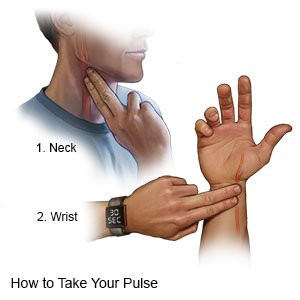How to Check Your Heart Rate

Understanding how to check your heart rate is important for maintaining good health. The heart rate, or pulse, refers to the number of times the heart beats per minute. When monitored regularly, valuable insights about one's heart health and fitness level are provided. Despite being a simple process, many people may not know the correct steps to measure it.
In daily life, heart rate monitoring helps in tracking fitness goals, detecting health issues, and assessing the body's response to exercise. Knowing how to check your heart rate empowers individuals to be more aware of their overall well-being. A heart rate that is too high or too low can signal the need for medical attention, which highlights the importance of learning this essential skill.
Where and How to Find Your Pulse
A heart rate can be easily checked by locating your pulse, which can be felt where blood vessels run close to the skin. The most common places to find the pulse are on the wrist and neck. For the wrist, the radial artery is used, and for the neck, the carotid artery can be accessed. First, the wrist should be turned so that the palm faces upward. Two fingers (index and middle) are then placed on the thumb side of the wrist, just below the base of the thumb. A gentle but firm pressure should be applied until the pulse is felt.
When checking the pulse on the neck, two fingers are placed on one side of the windpipe, and pressure is gently applied until the pulse is found. It is important to avoid using the thumb for measuring because it has its pulse, which can cause inaccurate readings. Once the pulse is located, it is counted for 60 seconds to determine the heart rate. Alternatively, it can be counted for 30 seconds and multiplied by two for the same result.
Why Heart Rate Matters
Heart rate plays a crucial role in assessing overall health and fitness. A normal resting heart rate for adults ranges from 60 to 100 beats per minute (BPM). Athletes or highly active individuals may have lower resting heart rates, sometimes as low as 40 BPM, which indicates a healthy, strong heart. In contrast, a higher resting heart rate may suggest stress, dehydration, or underlying health conditions.
Regular heart rate monitoring allows changes in heart function to be detected early. For instance, a sudden increase in heart rate at rest could indicate that the body is responding to stress, illness, or other factors. Similarly, a consistently low or irregular heart rate should be brought to a doctor's attention, as it might require further evaluation. During physical activities, tracking heart rate helps in determining the intensity of workouts. Exercising within a target heart rate zone ensures that the activity is effective but not overly strenuous.
Long-Term Benefits of Monitoring Your Heart Rate
Consistent heart rate checks are essential for long-term health management. By regularly tracking the pulse, individuals can recognize patterns and changes in their heart rate over time. This information helps in making decisions about lifestyle changes or when to seek medical advice. Additionally, heart rate data is often used by healthcare providers to monitor heart health and make informed recommendations.
For those with heart conditions, frequent pulse checks can be life-saving. By staying aware of irregularities or significant changes in their pulse, patients can avoid serious complications by seeking medical attention promptly. In addition, fitness enthusiasts benefit greatly from monitoring their heart rate, as it guides them in maintaining optimal exercise routines and achieving fitness goals. Heart rate data can also be shared with fitness trackers, making it easier to monitor progress and adjust activity levels accordingly.
In summary, checking your heart rate is a simple but powerful tool for maintaining good health. It allows individuals to be more informed about their body's signals, helping them make better decisions about their health and fitness. With regular monitoring, early detection of potential issues can be achieved, improving overall well-being and leading to healthier, more active lives.





